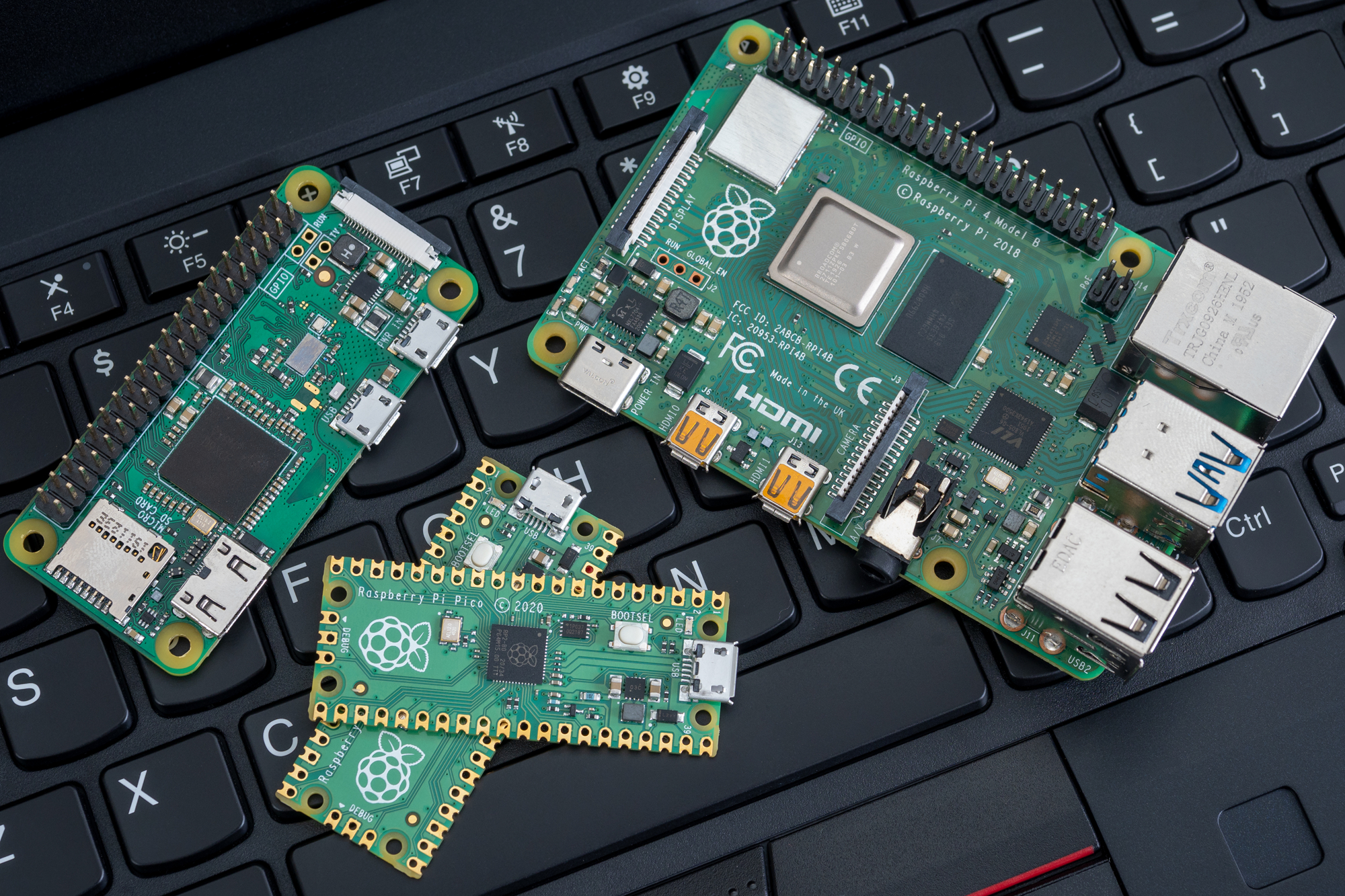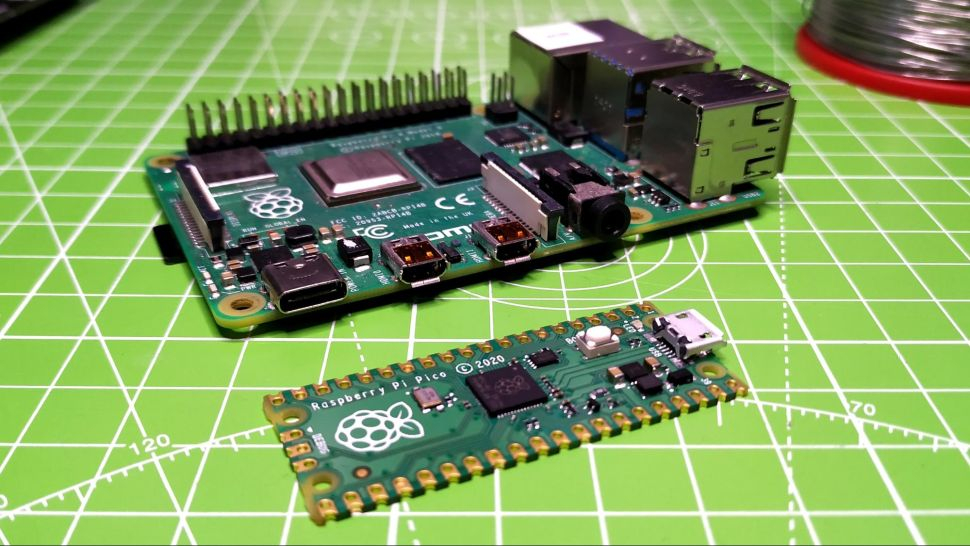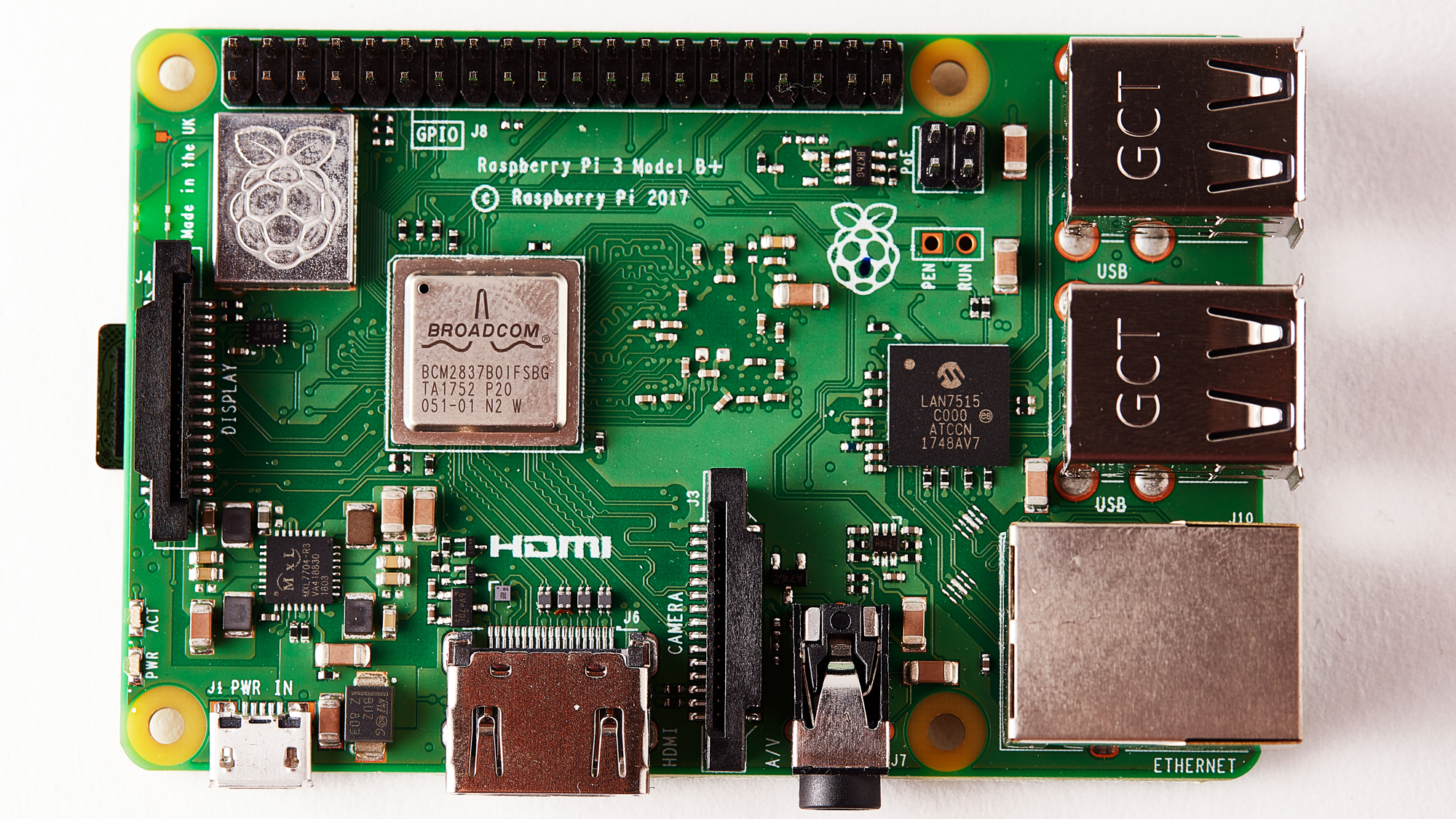Raspberry Pi’s Ninth Birthday: 9 Things You Might Not Know

One of the world’s most popular and innovative computers officially launched on February 29, 2012. Nine years and 38 million units sold later, the Raspberry Pi powers a huge community of makers, students and businesses. What started as a small project, meant to increase applications for Cambridge University’s computer science program has become a global movement.
Every serious tech enthusiast should own at least one Raspberry Pi or, if you’re like me, 30 Raspberry Pis. You can use one as a lightweight PC, a retro arcade machine or to power a variety of projects, from home security cameras to tic-tac-toe-playing robots, self-driving trash cans or streaming media servers.
In honor of the Raspberry Pi’s ninth birthday, here are 9 key facts about it.
1. Raspberry Pi’s original target was just 1,000 units.
The Raspberry Pi was originally developed to solve a very limited problem: the decreasing number of people applying to study computer science at Cambridge University. The number of applications had dropped from 600 to 250 per year and Eben Upton, who was the director of studies and responsible for admission, became concerned that not enough kids were taking an interest in computers. By providing a low-cost, hackable computer to just a few kids in the UK, Upton intended to get more and better students for his program.
"The stuff we were designing, the business model side, they were all scaled around the idea that if you could get 1,000 units built and into the hands of the right 1,000 kids [you'd solve the problem]," he told us in 2019.
After interest in the project swelled, Upton and his team decided that they needed to make a lot more than 1,000 units. And the target audience expanded from U.K. children to people of all ages in all countries.
2. There have been at least 21 Different Models of Raspberry Pi.

Since its launch in 2012, the Raspberry Pi Foundation has released 20 additional models, 52 if you count all four RAM capacities of the Raspberry Pi 4 B and all 32 variants of the Raspberry Pi Compute Module 4 (which comes in different RAM and storage capacities and with or without Wi-Fi).
Get Tom's Hardware's best news and in-depth reviews, straight to your inbox.
The original Raspberry Pi, the Model B had just 256MB of RAM and a single-core, 700 MHz processor. The current mainstream model, the Pi 4 B, has up to 8GB of RAM, a quad-core 1.5-GHz CPU and USB 3.0 ports.
| Model | Year Released | CPU | RAM |
|---|---|---|---|
| Raspberry Pi 1 B | 2012 | 700 MHz Broadcom BCM2835 (1 core) | 256MB |
| Raspberry Pi 1 A | 2013 | 700 MHz Broadcom BCM2835 (1 core) | 256MB |
| Raspberry Pi 1 A+ | 2014 | 700 MHz Broadcom BCM2835 (1 core) | 512MB |
| Raspberry Pi 1 B+ | 2014 | 700 MHz Broadcom BCM2835 (1 core) | 512MB |
| Compute Module 1 | 2014 | 700 MHz Broadcom BCM2835 (1 core) | 512MB |
| Raspberry Pi 2 B | 2015 | 900 MHz Broadcom BCM2836 (4 cores) | 1GB |
| Raspberry Pi Zero 1.2 | 2015 | 1 GHz Broadcom BCM2835 (1 core) | 512MB |
| Raspberry Pi 2 B v1.2 | 2016 | 1 GHz Broadcom BCM2835 (1 core) | 512MB |
| Raspberry Pi 3 B | 2016 | 1.2 GHz Broadcom BCM2837 (4 cores) | 1GB |
| Raspberry Pi Zero 1.3 | 2016 | 1 GHz Broadcom BCM2835 (1 core) | 512MB |
| Raspberry Pi Zero W | 2017 | 1 GHz Broadcom BCM2835 (1 core) | 512MB |
| Compute Module 3 | 2017 | 1.2-GHz Broadcom BCM2837 (4 cores) | 1GB |
| Compute Module 3 Lite | 2017 | 1.2-GHz Broadcom BCM2837 (4 cores) | 1GB |
| Raspberry Pi 3 B+ | 2018 | 1.2-GHz Broadcom BCM2837 (4 cores) | 1GB |
| Compute Module 3+ | 2019 | 1.2-GHz Broadcom BCM2837B0 (4 cores) | 1GB |
| Compute Module 3+ Lite | 2019 | 1.2-GHz Broadcom BCM2837B0 (4 cores) | 1GB |
| Raspberry Pi 4 B | 2019 | 1.5-GHz Broadcom BCM2711 | 1 / 2 / 4 / 8GB (2020) |
| Compute Module 4 | 2020 | 1.5-GHz Broadcom BCM2711 | 1 / 2 / 4 / 8GB |
| Raspberry Pi 400 | 2020 | 1.8-GHz Broadcom BCM2711 | 4GB |
| Raspberry Pi Pico | 2021 | 133-MHz RP2040 | 264K |
Launched in late 2020, the Raspberry Pi 400 is Raspberry Pi's first standalone computer. Instead of a bare board, the Pi 400 is a keyboard with the equivalent of a Pi 4 inside, though the CPU runs at 1.8 rather than 1.5 GHz. It's sold either by itself or in a kit with a mouse, power supply, cables and an official guide.
The Raspberry Pi Pico is a completely different type of Pi, a microcontroller board that's more like an Arduino than a traditional Pi (more on that below).
3. Raspberry Pi Pico marks a new chapter in Pi history.

Released in January 2021, the Raspberry Pi Pico is the company’s first microcontroller and marks the debut of its first custom silicon, the RP2040 CPU. Where every prior Pi has been a full-fledged computer that boots into a, typically Linux, operating system, the $4 Pico falls into the same category as Arduino. The Pico is great for controlling motors, lights and sensors and runs a program as soon as you turn it on, without the need to boot up or the worry that you’ll lose data if you pull the plug without doing a safe shutdown.
The Pico has three built-in ADC (analog-to-digital converters), something that other Pis lack, which allow you to connect directly to analog devices such as joysticks, potentiometers and distance sensors. See our articles about Raspberry Pico vs Arduino and which Raspberry Pi is right for you for more detailed comparisons between the Pico, the Arduino and other Raspberry Pis.
The RP2040 chip which powers the Pico marks an even bigger evolution than the board itself. This 133-MHz, dual-core Cortex M0+ CPU is designed by the Raspberry Pi Foundation and licensed out to other vendors such as Pimoroni and Adafruit who are building an entire ecosystem of RP2040-powered microcontrollers themselves. Even Arduino is getting in on the act, releasing the Arduino Nano RP2040 Connect, which will have built-in Wi-Fi and Bluetooth.
4. The most popular Pi is . . .

The Raspberry Pi 3 B is the best-selling Pi model of all-time, with 13.2 million units sold. Of the various Raspberry Pi 4 B RAM capacities, the 4GB model accounts for approximately twice as many sales as the 8GB and 2GB SKUs.
The Pico has only been on the market for a few weeks, but already has sold 250,000 units with 750,000 on back order. 2020 was the top-selling year for Pi, with 7.1 million units sold.
5. The Pi has more than 20 operating systems.
Raspberry Pi OS, a customized version of Debian, is the official operating system for Raspberry Pi boards, but it’s not the only choice, by far. From Pi-friendly versions of Ubuntu and FreeBSD Linux to unofficial ports of Android and Chrome OS, there are a ton of different operating systems available. Some of the most interesting include:
- LibreELEC: A lightweight OS that runs the Kodi open-source media software.
- RISC OS: Designed for ARM chips, this unique OS promises faster speeds than Linux.
- Chromium OS: Turn your Pi into a Chrome Box.
- Windows 10: Yes, you can install Windows 10 on a Raspberry Pi 4 (with some hacks), but it’s so slow you probably won’t want to keep using it.
- Lakka: Specially designed for retro gaming, this OS comes with a series of emulators pre-loaded.
6. There are two Raspberry Pis in space.
The International Space Station is home to two “Astro Pis,” which are specially modified Raspberry Pi B+ models that have been “space hardened” and equipped with the official Raspberry Pi Sense HATs . The European Space agency runs periodic contests where children submit code to be run on the devices.
Though the Pis are older models, they recently got a storage upgrade as the Astro Pi project sent 256GB microSD cards to the ISS to replace the 32GB cards they were using.
7. The Raspberry Pi Foundation wants products to live forever.
Even though the Raspberry Pi B+, Raspberry Pi 2, Raspberry Pi 3 B and other models are way out of date, the Raspberry Pi Foundation continues to actively manufacture and sell them. The organization hates to End-of-Life (EOL) products, because there are industrial clients who may still need them even if they are really old.
"EOLing product is death. We’ve EOLed [just] five products in our life," Upton told us in 2019. He said that the only five products that Raspberry Pi discontinued include the Pi 1A and Pi 1B, because "the Pi 1A+ and B+ are a better implementation of that world."
Even after the price of the Raspberry Pi 4 B (2GB) dropped to $35, the 1GB model remained available at the same price, because some customers may still want it as a drop-in replacement.
8. The price of Raspberry Pi has dropped, relative to inflation.
The original Raspberry Pi cost $35 in 2012 while the Raspberry Pi 4 B (2GB) costs the same price today. However, if you consider inflation, $35 from 2012 is actually equivalent to $39.88 today. For that same price, you get:
- A 40x faster processor (700 MHz, single-core vs 1.5-GHz quad core)
- 8x the RAM (256GB vs 2GB)
- Wi-Fi vs no-Wifi
- Dual monitor output vs single HDMI out
- USB 3.0 ports vs USB 2 only
If $35 still seems like a lot of money, there are cheaper Pi models. The Raspberry Pi Zero goes for just $5 while the Raspberry Pi Pico, a microcontroller board, goes for a mere $4.
9. There’s a Pi War every year.
Yes, you can compete with your Raspberry Pi. Pi Wars is an annual robotics competition where all of the gear must be built with your choice of Raspberry Pi. Teams at Pi Wars compete in challenges such as navigating obstacle courses, popping balloons and navigating a maze.
There are both human-driven and automated challenges. The next Pi Wars will take place in July 2021.
Avram Piltch is Managing Editor: Special Projects. When he's not playing with the latest gadgets at work or putting on VR helmets at trade shows, you'll find him rooting his phone, taking apart his PC, or coding plugins. With his technical knowledge and passion for testing, Avram developed many real-world benchmarks, including our laptop battery test.
